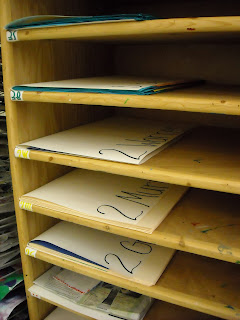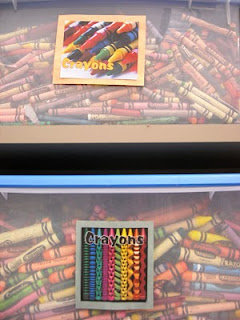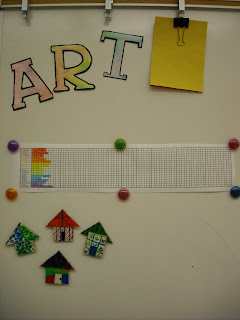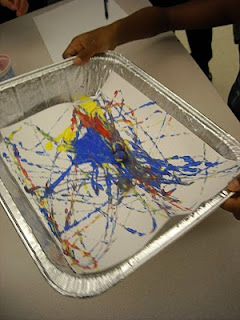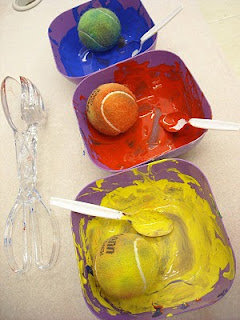KINDERGARTEN
 They just finished their "Kindergarten Kandinsky" projects. We identified shapes and colors in Kandinsky's paintings, and then drew shapes with oil pastels. Next class we watercolored over them.
They just finished their "Kindergarten Kandinsky" projects. We identified shapes and colors in Kandinsky's paintings, and then drew shapes with oil pastels. Next class we watercolored over them. I can. . .
- recognize shapes in Kandinsky's art
- use oil pastels to draw shapes
- use good painting techniques
FIRST GRADE

First grade just finished making their "dot" drawings, which can be found here. I did find another book to use with it called Katie's Sunday Afternoon by James Meyhew. A little girl goes into some pointillist paintings in a museum. The kids really liked the story, and I like that it shows reproductions of Seurat, Pissarro, and Signoc.
SECOND GRADE

Second grade is working on their Henri Matisse Goldfish collages, which can be found here. We're making them a bit smaller this year to finish them quicker.
THIRD GRADE
 They are creating awesome Laurel Burch Cats, found here. If you're interested in doing it, feel free to use my Prezi, which is here.
They are creating awesome Laurel Burch Cats, found here. If you're interested in doing it, feel free to use my Prezi, which is here.FOURTH GRADE
 Wow! Finally one I haven't already blogged about! My fourth graders started with "Name Fish." A pretty traditional lesson, I think. I start by telling them it's an IMAGINARY fish. They are asked to draw a fish, add thier name in bubble letters on the body, and use value in every section of the fish with colored pencils. Those are their Learning Targets too.
Wow! Finally one I haven't already blogged about! My fourth graders started with "Name Fish." A pretty traditional lesson, I think. I start by telling them it's an IMAGINARY fish. They are asked to draw a fish, add thier name in bubble letters on the body, and use value in every section of the fish with colored pencils. Those are their Learning Targets too.FIFTH GRADE
Fifth grade is working on Op Art and Rose Windows (at different schools).








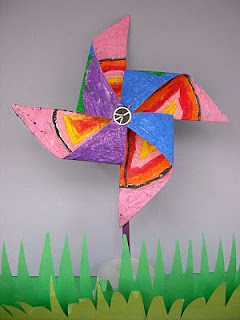




 "Class folders" simply have the grade and teacher's name on the outside of the folder.
"Class folders" simply have the grade and teacher's name on the outside of the folder.